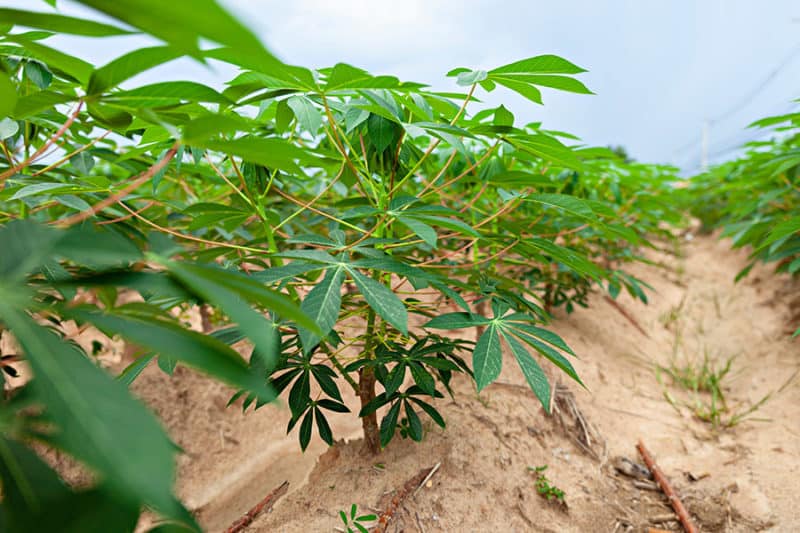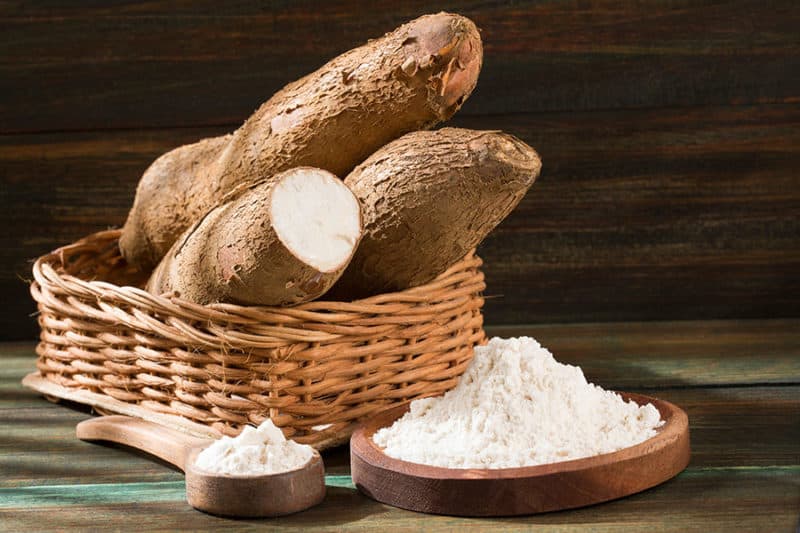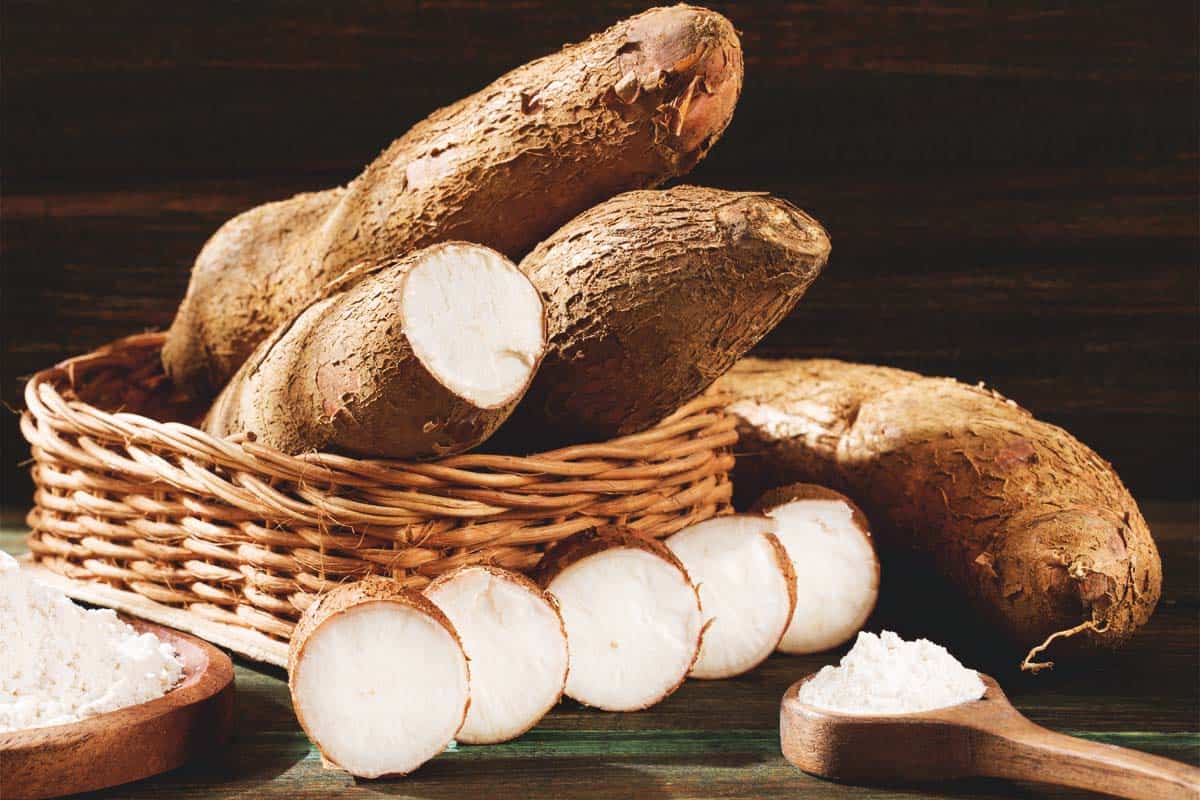Growing Cassava: Planting Guide, Care, Problems and Harvest
Cassava is a wonderful, yet little known tropical root crop. The crop has been a lifesaver in many countries around the world thanks to its high nutritional value. It’s full of starch and carbohydrates, so it provides a nutritious meal, which is why its third-largest source of carbohydrates in tropical areas.
Cassava, often called yuca in other countries, is relatively simple to grow and one plant gives you an extremely generous harvest because it keeps growing from the same plant. The plant is practically pest free and drought resistant.
 As well as being an important staple crop, cassavas are full of nutrients and are good for digestion. The drawback is cassavas contain large amounts of cyanide, so you must cook it in order to eat it. On the bright side, the cyanide is one of the reasons cassava has few pests. Cassavas also store well and freeze well, hence its sold frozen in Trinidad.
As well as being an important staple crop, cassavas are full of nutrients and are good for digestion. The drawback is cassavas contain large amounts of cyanide, so you must cook it in order to eat it. On the bright side, the cyanide is one of the reasons cassava has few pests. Cassavas also store well and freeze well, hence its sold frozen in Trinidad.
If you can find cassava seedlings or a piece of root to plant, give growing cassava a try. Don’t let the fact that raw cassava contains cyanide put you off.
How to Plant Cassavas
Growing Zones
Cassava is from tropical environments such as our country Trinidad and Tobago. It needs 8 months of heat to grow well, ideally zones 8-11. Growing cassava below zone 8 is impractical.When it gets cold, cassavas freeze to the ground, but they’ll come back to life and gift you with wonderful roots and leaves.
Sun Requirements
As you’d expect from a plant that originates in a tropical environment, cassava thrives in full sun. It likes heat and humidity.
Soil Requirements
Cassava is one of those plants that grow well in any soil type, even poor soil. Loamy soil rich with well-rotted organic matter produces the best results, however. Cassava may struggle in clay or compact soil, but even then it will produce enough to harvest.
Soil should have a pH between 5.5 and 6.5 to produce the best results.
 Container Planting
Container Planting
Cassava grows to up to 12 feet tall and requires a lot of space for the roots and isn’t suitable for container planting.
Planting Cassava
Tip- Be careful with the cassava stick when planting, ensure the eye or sprout is facing upwards otherwise the plant would grow downwards.
Cassava plants are hard to find, but if you can get a hold of stem cuttings you can start your own cassava plant, which will keep you going forever.
 Simply take 11-inch cuttings of stems that are over a year old. Ensure you have between 4 and 7 nodes on the stem. Plant them in suitable soil either laying down on its side 2 inches deep or sticking out of the soil like a stake. Make sure a quarter of the stem is planted. Within a week or two, new leaves appear and the plant is on its way.
Simply take 11-inch cuttings of stems that are over a year old. Ensure you have between 4 and 7 nodes on the stem. Plant them in suitable soil either laying down on its side 2 inches deep or sticking out of the soil like a stake. Make sure a quarter of the stem is planted. Within a week or two, new leaves appear and the plant is on its way.
Then, in about 12 to 18 months’ time, you’re ready to harvest your first cassava crop. It’s that simple.
Spacing
Plant cassava at least 3 feet apart with 3-16 feet between rows.
Caring for Cassavas

Fertilizer
Your soil should have well-rotted manure dug in at the time of planting. Within two months, add more manure or a good quality liquid fertilizer.
Water
 Keep the soil moist in the first month of planting to give the stems a good start. If the cassava plant loses a lot of leaves it’s likely it’s not getting enough water. Cassava is drought resistant, but water well and it will produce more roots of better quality. Don’t allow the soil to stay soaked, though, as this may cause the roots to rot.
Keep the soil moist in the first month of planting to give the stems a good start. If the cassava plant loses a lot of leaves it’s likely it’s not getting enough water. Cassava is drought resistant, but water well and it will produce more roots of better quality. Don’t allow the soil to stay soaked, though, as this may cause the roots to rot.How to Harvest and Use Cassava

 Here’s where the fun begins. I chop the entire plant down with a machete, leaving about a foot of the stem behind. Carefully dig the soil away. The roots grow away from the main stem and are normally within the first two feet. Look for deep brown roots that appear flaky. Be careful not to damage the roots as you dig them up as they won’t store well. Use the branches you’ve just chopped down to create the new stems. Plant them as described above and get the next crop on the way. You can store roots in a cupboard for a week, or you can freeze them. You can also keep them peeled in water in the fridge for up to a month. Change the water every few days.
Here’s where the fun begins. I chop the entire plant down with a machete, leaving about a foot of the stem behind. Carefully dig the soil away. The roots grow away from the main stem and are normally within the first two feet. Look for deep brown roots that appear flaky. Be careful not to damage the roots as you dig them up as they won’t store well. Use the branches you’ve just chopped down to create the new stems. Plant them as described above and get the next crop on the way. You can store roots in a cupboard for a week, or you can freeze them. You can also keep them peeled in water in the fridge for up to a month. Change the water every few days.












No comments:
Post a Comment